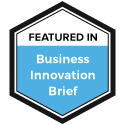
Reviving Marketing With Empathetic AI: The aiCMO Movement
Reviving Marketing With Empathetic AI: The aiCMO Movement
Marketing has lost its way. For years, brands have been caught in the endless cycle of algorithm-chasing, clickbait tactics, and performance metrics that reward noise over meaning. The result? Audiences are burned out, disengaged, and increasingly skeptical of brand messaging.
The good news? There’s a way forward. Enter aiCMO, a marketing platform built on the foundation of empathy, purpose, and authenticity. It’s not just another AI tool — it’s a movement toward marketing that resonates on a human level.
Why aiCMO? Because the Market Craves Authenticity
I’ve been in this space long enough to see how automation and AI have shifted marketing. While they’ve made things more efficient, they’ve also distanced brands from real human connection. aiCMO is here to change that.
Built by the award-winning team at Zero Company, aiCMO uses AI to enhance — not replace — the human touch in marketing. It helps brands discover their higher purpose, tell meaningful stories, and connect with their audiences in ways that feel real.
Stephen Sakach, the founder of aiCMO, summed it up perfectly:
“In a world craving authenticity, aiCMO doesn’t just amplify your brand’s voice — it discovers your heart.”
This is where AI should be heading — not just as a tool for efficiency, but as an enabler of deeper, more meaningful engagement.
The Science of Empathetic Marketing
Research shows that emotional connection is the real driver behind engagement. According to a recent Khris Digital study, 70% of consumers who feel an emotional bond with an ad are more likely to buy.
That’s where aiCMO shines. Instead of producing soulless, generic content, it crafts campaigns that speak to the heart — because AI should support human creativity, not replace it.
Design Thinking plays a massive role in this. If you’ve followed my work, you know how much I believe in human-centered problem-solving. aiCMO integrates this philosophy, enabling brands to adapt, collaborate, and infuse emotion into every campaign.
What Makes aiCMO Different?
This isn’t just another AI-powered marketing tool. aiCMO is designed to bring humanity back into the process while saving brands time and resources. Here’s how:
- Empathy-Driven Strategies — The Blissed Campaign Lab helps generate emotionally intelligent campaign ideas, ensuring your messaging connects on a deeper level.
- Purpose-Led Messaging — The Purpose Crafter helps brands identify and articulate their unique purpose, making sure their marketing reflects their true identity.
- AI-Powered Insights — Intelligent recommendations streamline workflows without sacrificing authenticity.
- Scalability & Accessibility — Whether you’re a small business, agency, or enterprise, aiCMO adapts to your needs.
Real-World Impact
Early adopters of aiCMO are already seeing its power. Sarah Middleton, CEO and President at Mission Up, shared:
“The platform saved me time and helped me create marketing content and creative that aligned perfectly with my company’s purpose, delivering empathetic and creative ideas I could implement right away.”
This is the kind of transformational marketing we need — where AI supports human creativity, rather than stripping it away.
The Future of Marketing Is Human
The launch of aiCMO signals a shift in how we approach marketing. It’s not about shouting louder or chasing trends — it’s about connecting in a way that truly matters.
If you’re ready to ditch hollow marketing tactics and start engaging with your audience on a deeper level, aiCMO is worth exploring. Learn more at aiCMO.io.
Let’s bring empathy, authenticity, and purpose back into marketing — because the world doesn’t need more noise. It needs more meaning.










Recent Comments